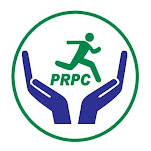🔍 How Common is Back Pain?
Today, back pain has become one of the most common health issues worldwide. Long hours of desk work, poor posture while using smartphones or laptops, improper lifting techniques, and a sedentary lifestyle are all major contributors to back pain. The good news is that in most cases, physiotherapy proves to be an extremely effective treatment method.
💡 Types of Back Pain
Physiotherapists usually categorize back pain into two main types:
-
Acute Back Pain – Sudden onset, usually lasts up to 6 weeks.
-
Chronic Back Pain – Persistent pain that lasts for 3 months or longer.
🧑⚕️ Common Physiotherapy Treatments for Back Pain
Physiotherapists apply a variety of treatments depending on the severity and nature of the pain. Here are some of the most effective methods:
1. Manual Therapy
Hands-on techniques are used to relieve pain and improve joint mobility.
2. Ultrasound Therapy
Sound waves generate deep heat in the muscles to increase blood flow and reduce stiffness.
3. TENS Therapy (Transcutaneous Electrical Nerve Stimulation)
Electrical signals are applied to block pain signals and stimulate healing.
4. Traction Therapy
A machine applies gentle pulling forces to the spine, helping reduce disc-related pressure.
🤸 5 Effective Exercises for Back Pain
1. Cat-Cow Stretch
Improves spinal flexibility and posture.
2. Child’s Pose
Gently stretches the lower back and promotes relaxation.
3. Pelvic Tilt
Strengthens and stabilizes the lower back.
4. Core Stabilization Exercises (Plank, Bird-Dog)
Improves balance and reduces pressure on the spine.
5. Hamstring Stretch
Loosens tight hamstrings, which can reduce stress on the back.
 Note: Always perform exercises based on your specific condition. Incorrect exercises may worsen the pain. It's best to consult a physiotherapist before starting any routine.
Note: Always perform exercises based on your specific condition. Incorrect exercises may worsen the pain. It's best to consult a physiotherapist before starting any routine.
⚠️ When Should You See a Physiotherapist?
If the pain lasts more than a week
-
If the pain worsens at night or disrupts sleep
-
If you feel numbness or tingling in your legs or lower back
-
If your movement is significantly limited due to pain


 Read More:
Read More: